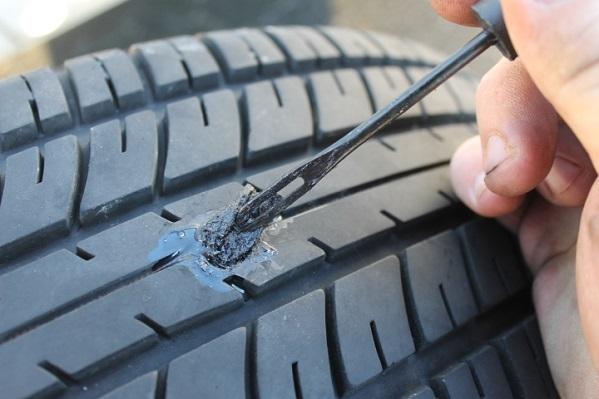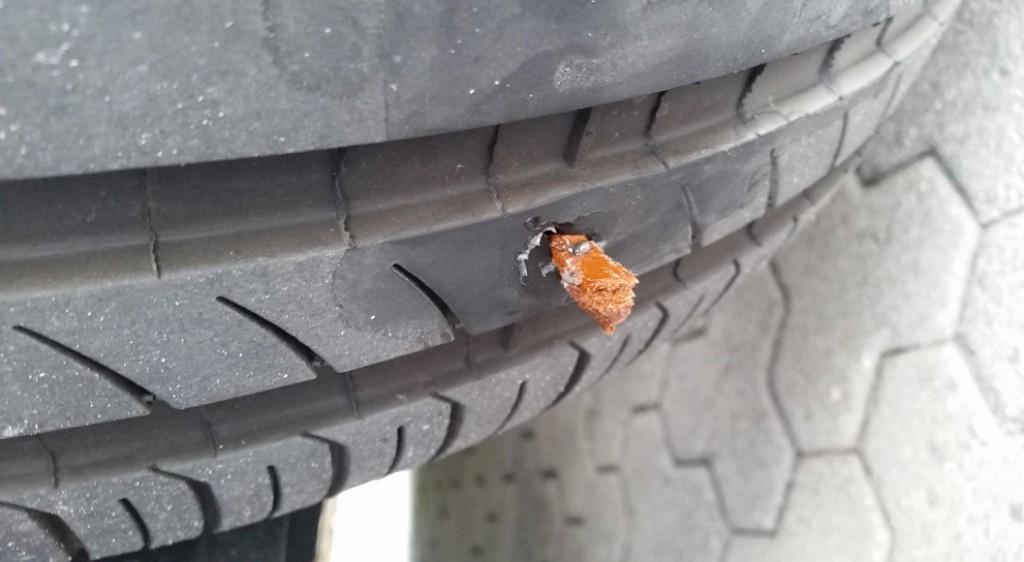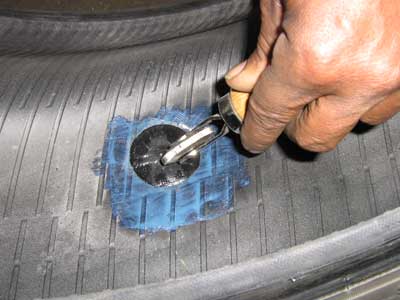Lots of drivers while hitting the road rely either on tire patch or a tire plug to repair a tire. So far we have got a bag full of mixed opinions from experts. So, the debate remains: can a tire patch be more viable than a tire plug? Here we present a detailed analysis of which procedure to follow when you need an emergency flat repair job.

Contents
Can a Tire Plug Stand?
Inexperienced mechanics may ask you to opt for a tire plug, considering it’s the cheapest option. If your car breaks down in the middle of a highway and you need an emergency fix to reach your destination, a low-cost plug is the way to go. It takes no more than $10 and a few minutes to implement a plug.
More interestingly, the plug technology has improved over the years. A quick tire plug can keep you going for many more days to come. So, it is no longer the vulnerable option that it used to be.
[efsbutton class=”btn” style=”” size=”” color_class=”” align=”left” type=”link” target=”false” title=”Join our FREE CAR GIVEAWAY Campaign here” link=”https://carfromjapan.com/campaign/car-from-japan-free-car-giveaway-2018″]
Some Limitations of the Plug Method
Though a tire plug seems an easy-to-access option, the different road transport agencies repeatedly warned against such a fix. In some situations, a tire plug may not work as projected:
- A puncture near the sidewall can only be sealed properly through a tire patch.
- A non-straight puncture means you need a patch to repair the damage.
- Experts often prohibit applying a plug without any patch at all. A thorough inspection can unveil additional damages that were primarily unseen. The best practice is combining a patch with a plug. It will stabilize the puncture and fully mend the damages.
Watch more:
Tire Patching: Is It Really Effective?
When driving, you may experience incidents of flat tires, punctured tires, etc. Therefore, equipping yourself with skills, handling situations, and tools is also necessary. Patching your tire is extremely necessary.
Usually, when a tire breaks down in the middle of the road, you don’t have to spend too much time waiting for rescue. Drivers often proactively equip glue and tools on the vehicle to be able to patch their tires when needed. So whether patching your tires is enough to ensure safety is something that many drivers are concerned about. Reality shows that self-patching tires is a highly appreciated method because of its convenience. Just a few simple steps to inject glue into the punctured mounting position and you can continue your journey without having to disassemble the tire.
However, it’s a temporary method and it’s not effective for large punctures. The reason is that, if the chemical is used for a long time, it can damage the tire, causing tire and wheel wear. When the car moves, the tire begins to heat up, the glue melts into water and the additives clump, the grip decreases and causes transpiration. Since this is a temporary measure, take it to the nearest garage so the puncture can be treated. To ensure safety and not cause any impact on tire life.

Larger Tire Punctures
If you have enough knowledge regarding tire safety, then, by now you know that some damages are not repairable. A ¼” or longer puncture diameter will take you to discover other solutions, aside from a tire plug or tire patch. Some car owners either use a spare or buy an additional tire to deal with such a problem.
You should also consult with your mechanic to know what can be a sustainable solution the next time you face such a problem. And be candid while asking to know the safest method to fix your tire. Safety is a major concern when repairing puncture; so you can never overlook it.
Final Thoughts
There are many reasons why tires are punctured, but it is mainly due to sharp objects such as nails, rocks, or iron on the road. Besides, punctured tires can also be due to the condition of the tire such as under-inflated tires, old tires, or overloading. Patching or plugging the tire is the common method many drivers choose when encountering this problem. We hope that with all the information we provide in this article, you will find a suitable solution for your car.
We hope that the article will be useful for you!



